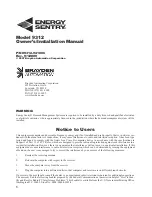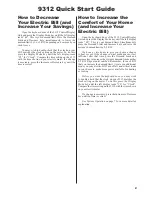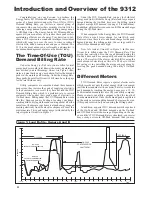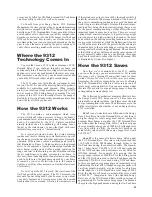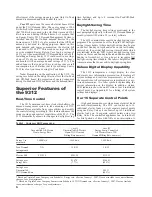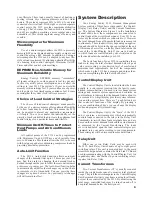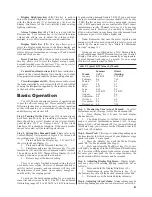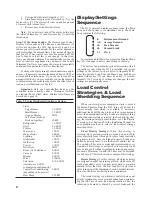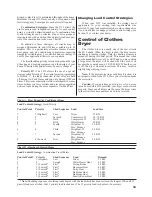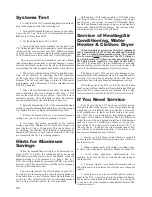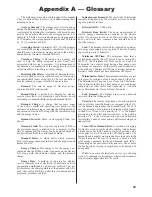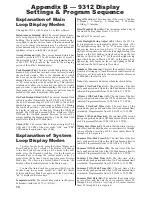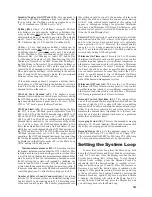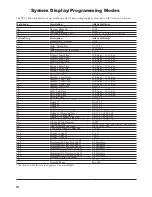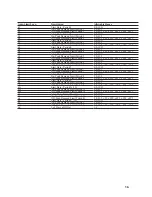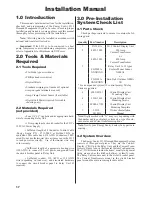
Introduction and Overview of the 9312
Figure 1: Load Profi le - Owners A and B
3
Congratulations on your decision to purchase the
Energy Sentry 9312 Demand Management System. As the
owner of a home metered under the Time-Of-Use (TOU)
Demand Billing Rate, you fall into a special group of
consumers who can lower their monthly electric bills by
reducing energy demand peaks and shifting energy usage
to Off-Peak times. The Energy Sentry 9312 Demand Man-
agement System enables you to reduce these peaks while
maintaining effi cient use of energy. Your decision to pur-
chase a 9312 represents a sound and intelligent investment
which will repay you over the years to come in reduced
electric bills, added convenience and peace of mind. The
9312 is the most advanced, user-friendly, and simplest to
use demand management system on the market today.
The Time-Of-Use (TOU)
Demand Billing Rate
Under the Energy (or fl at) rate, you are billed for total
energy used per month (total kilowatt-hour use) regardless of
how or when you use this energy. Owner A in Figure 1 illus-
trates a typical daily energy use pattern. Notice the demand
peaks in the morning and evening. Under the Energy Rate,
these peaks do not affect Owner A’s bill since he or she pays
for the total Kwh use only.
Utility companies are concerned about these demand
peaks since they increase the costs of supplying electricity
to their customers. As a result, they have devised the TOU
Demand Billing Rate, which is a preferred rate, to reward
customers who control their peak usage of electricity in
On-Peak times. Billing under the TOU Demand Rate works
like this: Suppose you are heating or cooling your home,
washing dishes, drying clothes and cooking a meal all at the
same time. Chances are your home is at peak energy usage or
drawing electricity from the electric company at or near the
maximum rate. This peak energy usage is illustrated by the
largest spike in Owner A in Figure 1.
Under the TOU Demand Rate, you pay for both total
energy used (in Kwh like the Energy Rate) and for your peak
demand during the On-Peak time over the billing period
(highest average KW demand - see page 12 for defi nition).
In addition, utilities offer reduced or no KW demand charges
during the Off-Peak times.
When compared to the Energy Rate, the TOU Demand
Rate offers a much lower charge for total Kwh used.
However, since there is also a demand charge for the peak
demand during the billing period, the savings could be
offset if this demand peak is high.
Now let’s look at Owner B in Figure 1. In this case,
Owner B is billed under the TOU Demand Rate. This
person has controlled his or her peak demand during the
On-Peak time and has consequently reduced the demand
charge. The result will be a lower electric bill for using the
same amount of electricity as Owner A. The key to Owner
B’s savings is in controlling the average energy usage by
leveling the peak demand during the utility’s On-Peak
time.
Different Meters
TOU Demand Rates require a special electric meter
which records not only the total energy (Kwh) consumed,
just like the standard watt-hour meter, but also records the
peak demand by tracking the energy usage over a 15, 30,
or 60-minute demand interval, set by your utility company.
Please contact your utility company to fi nd the length of
your demand interval. Once this demand peak is registered
on the meter, a corresponding demand charge results, even
if this peak occurred only once during the billing period.
In addition, a special TOU demand meter keeps track
of the On-Peak and Off-Peak demand and the On-Peak
and Off-Peak kilowatt-hour usage. Depending on the way
your utility’s TOU Demand Rate is structured, your meter
may or may not record Off-Peak demand, thus you may
19
15
10
5
12am
1
2
3
4
5
6
7
8
9
10
11
12pm
1
2
3
4
5
6
7
8
9
10
11
12
kW DEMAND
TIME
OFF PEAK
OFF PEAK
ON PEAK
CONTROL PERIOD
9AM TO 9PM
OWNER A
ENERGY USE-UNCONTROLLED
OWNER B
ENERGY USE-CONTROLLED
TIME OF DEMAND RATE



